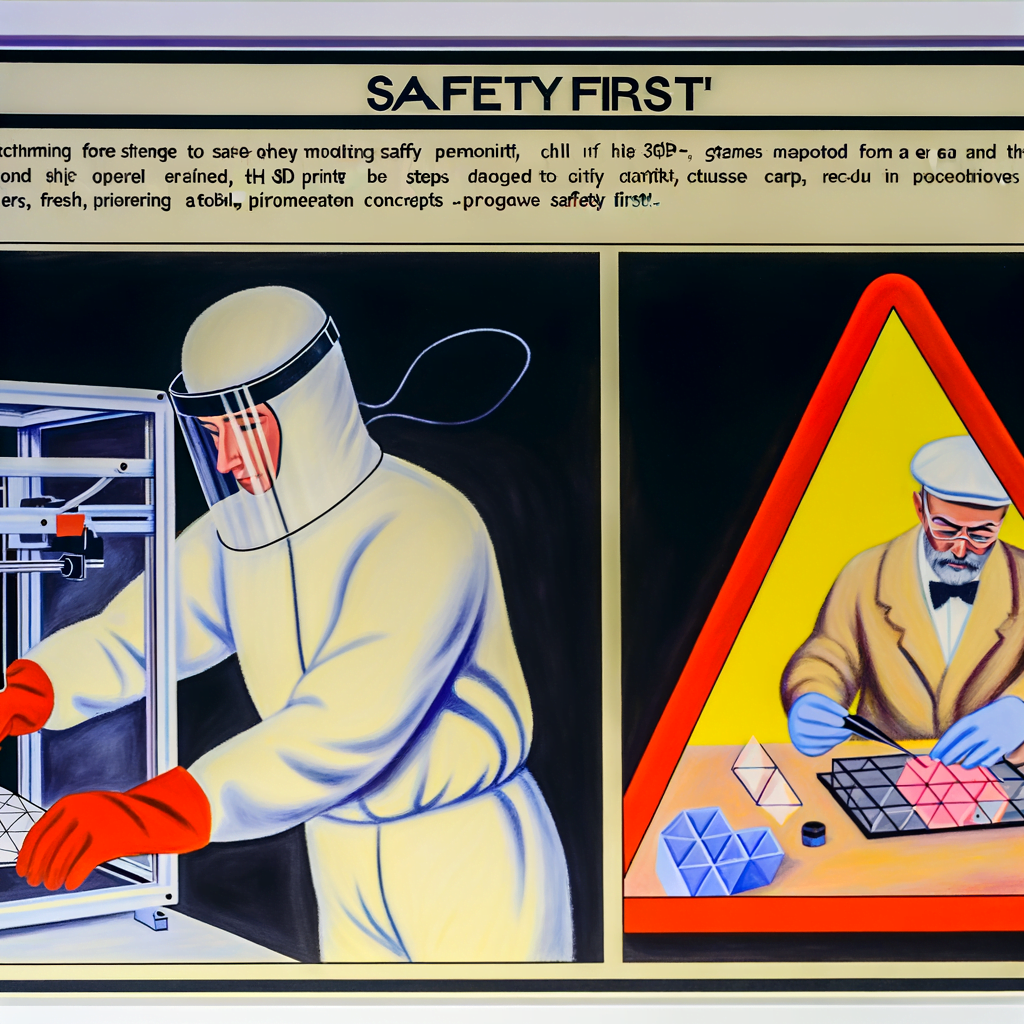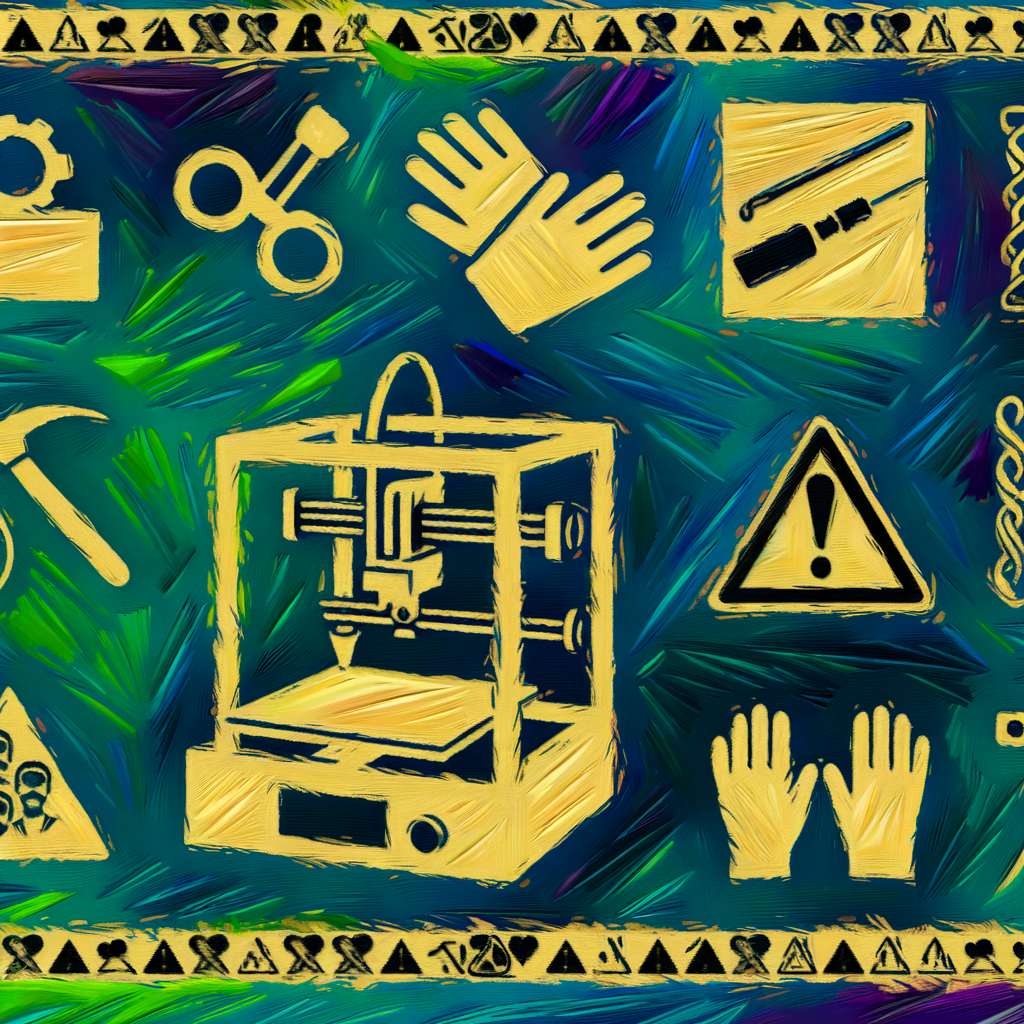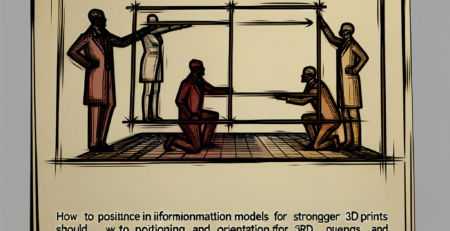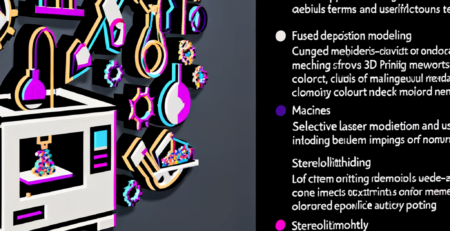Safety First! How to 3D Print Safely
Sommario
“Print Smart, Print Safe: Ensuring Your 3D Creations Are Hazard-Free!”
introduzione
Safety First! How to 3D Print Safely
3D printing, also known as additive manufacturing, has revolutionized the way we create and manufacture objects, offering unparalleled flexibility in design and production. However, as with any technology, it comes with its own set of safety concerns that must be addressed to ensure a secure and healthy environment for users. From the emission of potentially harmful particles to the risk of burns and mechanical injuries, it is crucial to understand and mitigate the risks associated with 3D printing. This introduction will guide you through the essential safety measures and best practices to follow when operating 3D printers, ensuring that your creativity and innovation are matched by your commitment to safety. Whether you are a hobbyist, educator, or professional, adopting a “Safety First” approach is key to enjoying the benefits of 3D printing while minimizing potential hazards.
Understanding Ventilation: Key to Safe 3D Printing Practices
Safety First! How to 3D Print Safely
In the realm of additive manufacturing, 3D printing has emerged as a transformative technology, enabling the creation of complex geometries and designs that were once considered unattainable. However, as with any manufacturing process, it is imperative to prioritize safety to mitigate potential hazards. Among the various safety considerations, understanding ventilation stands out as a critical component of safe 3D printing practices.
The process of 3D printing, particularly when using methods such as Fused Deposition Modeling (FDM) or Stereolithography (SLA), can release airborne particles and volatile organic compounds (VOCs) into the environment. These emissions can stem from the heating of plastic filaments or the reaction of resins, and prolonged exposure can have adverse health effects. Therefore, ensuring proper ventilation is not just a recommendation; it is a necessity for maintaining a safe workspace.
To begin with, it is essential to operate 3D printers in well-ventilated areas. This means that the printing should take place in a room with ample airflow, where fresh air can circulate and dilute any potentially harmful emissions. In some cases, this may involve the use of a dedicated printing room with an external venting system. Such a setup can effectively expel contaminated air directly outside, reducing the concentration of any hazardous substances in the indoor environment.
Moreover, the use of specialized enclosures for 3D printers can further enhance safety. These enclosures not only help in containing particles and fumes but can also be equipped with filtration systems. High-Efficiency Particulate Air (HEPA) filters, for instance, are capable of trapping fine particles, while activated carbon filters can adsorb VOCs, thereby purifying the air before it is recirculated or vented out. It is crucial, however, to regularly maintain and replace these filters to ensure their effectiveness over time.
In addition to mechanical ventilation, personal protective equipment (PPE) such as respirators or masks can provide an additional layer of protection, particularly in scenarios where ventilation improvements are not feasible. It is important to select the appropriate PPE based on the type of materials being used and the specific risks they pose. For instance, when working with materials known to emit ultrafine particles, a respirator with a particulate filter would be advisable.
Furthermore, it is vital to be aware of the materials being used for printing. Different filaments and resins can have varying levels of toxicity and may require different safety measures. Manufacturers often provide Material Safety Data Sheets (MSDS) that detail the potential hazards and recommended handling procedures for their products. Familiarizing oneself with these documents can inform the necessary precautions to take, including the type of ventilation or PPE required.
Lastly, education and training play a pivotal role in safe 3D printing practices. Users should be thoroughly trained not only in the operation of the printers but also in the recognition of potential hazards and the implementation of safety protocols. This includes understanding the importance of ventilation and how to effectively use it to minimize risks.
In conclusion, while 3D printing opens up a world of possibilities, it is incumbent upon users to approach it with a safety-first mindset. Understanding and implementing proper ventilation is a cornerstone of safe 3D printing practices. By combining well-ventilated spaces, appropriate enclosures with filtration systems, suitable PPE, careful material selection, and comprehensive training, individuals and organizations can harness the power of 3D printing without compromising health and safety.
Personal Protective Equipment for 3D Printing: A Comprehensive Guide

Safety First! How to 3D Print Safely
In the realm of additive manufacturing, 3D printing has emerged as a revolutionary technology, enabling the creation of complex designs with relative ease. However, as with any manufacturing process, it is imperative to prioritize safety to prevent accidents and health issues. Personal Protective Equipment (PPE) plays a crucial role in ensuring a safe environment for those involved in 3D printing operations. This comprehensive guide will delve into the various types of PPE necessary for 3D printing and the reasons why they are indispensable.
Firstly, respiratory protection is of utmost importance, especially when dealing with fine particles and fumes that can emanate from heated printing materials. Materials such as ABS (Acrylonitrile Butadiene Styrene) release volatile organic compounds (VOCs) when melted, which can be harmful if inhaled. Therefore, wearing a properly fitted respirator or mask with the appropriate filter can significantly reduce the inhalation of these potentially toxic fumes. It is essential to select a respirator that is designed to filter out the specific particles and chemicals used in your 3D printing process.
Moreover, the eyes are particularly vulnerable during 3D printing. The process may produce splashes of molten material or emit intense light that can cause eye strain or damage. Safety goggles or glasses with side shields offer a barrier against these hazards, protecting the eyes from any stray particles or harmful UV radiation from certain types of printers. It is crucial to ensure that the eyewear provides a snug fit and is made of a material that can withstand impacts and high temperatures.
Additionally, the handling of raw materials and finished products often necessitates the use of gloves. When selecting gloves, one must consider the type of material being handled. For instance, thermoplastics can reach high temperatures and may cause burns upon contact with skin. Heat-resistant gloves can provide a layer of insulation, safeguarding against thermal hazards. On the other hand, when dealing with photopolymer resins, chemical-resistant gloves are necessary to prevent skin irritation or allergic reactions caused by these substances.
Furthermore, the noise generated by 3D printers, particularly industrial models, can be a source of auditory concern. Prolonged exposure to high decibel levels can lead to hearing impairment. Thus, wearing ear protection such as earplugs or earmuffs is advisable to mitigate the risk of noise-induced hearing loss. It is important to choose ear protection that comfortably fits while providing adequate noise reduction.
Lastly, proper attire is also a key aspect of PPE for 3D printing. Loose clothing or jewelry can become entangled in moving parts of the printer, posing a risk of injury. Wearing fitted clothing and securing long hair can help prevent such accidents. Additionally, closed-toe shoes should be worn to protect feet from falling objects or spills.
In conclusion, while 3D printing opens up a world of possibilities, it is essential to approach it with a safety-first mindset. By equipping oneself with the appropriate PPE, one can minimize the risks associated with the 3D printing process. Respiratory protection, eye safety, hand and skin care, hearing conservation, and proper attire form the pillars of a comprehensive safety protocol. Adhering to these guidelines not only ensures personal well-being but also fosters a culture of safety within the 3D printing community. As the technology continues to evolve, so too should our commitment to safe practices, ensuring that innovation progresses hand in hand with the health and safety of all involved.
Fire Hazards and 3D Printing: Prevention and Preparedness Strategies
Safety First! How to 3D Print Safely
The advent of 3D printing technology has revolutionized the way we create and manufacture objects, offering unparalleled flexibility and customization. However, as with any technological advancement, it is crucial to acknowledge and mitigate the associated risks to ensure a safe environment for users and bystanders. Among these risks, fire hazards are particularly concerning, given the potential for significant damage and harm. Therefore, understanding prevention and preparedness strategies is essential for anyone involved in 3D printing.
Firstly, it is important to recognize that 3D printers operate at high temperatures, with some components reaching several hundred degrees Celsius. This heat is necessary to melt and extrude the printing material, whether it be plastic, resin, or metal. Consequently, the risk of overheating and ignition is not trivial. To prevent such incidents, it is imperative to use 3D printers that have built-in safety features, such as automatic shutdown mechanisms in case of overheating or malfunction.
Moreover, the choice of materials used in 3D printing can significantly affect fire risk. Materials like ABS (Acrylonitrile Butadiene Styrene) are known to be flammable, requiring careful handling and monitoring during printing. On the other hand, materials such as PLA (Polylactic Acid) are considered less flammable but still require caution. Users should always opt for high-quality materials from reputable suppliers and ensure they are used within the recommended temperature ranges.
Additionally, the location of the 3D printer is a critical factor in fire safety. The printer should be placed in a well-ventilated area, away from flammable materials and out of reach of children and pets. Adequate ventilation not only prevents the buildup of potentially combustible fumes but also helps to regulate the temperature of the printer, reducing the risk of overheating.
Regular maintenance and inspection of the 3D printer are also vital components of a comprehensive fire safety strategy. Worn or damaged electrical components, such as wiring and power supplies, can pose a significant fire risk. Users should routinely check these parts for signs of wear and replace them as necessary. Furthermore, keeping the printer clean from dust and debris can prevent accidental ignition sources from coming into contact with hot surfaces.
In the event of a fire, being prepared can make all the difference. It is advisable to have a fire extinguisher readily available and to ensure that it is suitable for electrical fires. Users should familiarize themselves with the operation of the extinguisher and the proper procedures for dealing with a fire. Additionally, installing smoke detectors near the printing area can provide an early warning, allowing for a swift response to any incidents.
Lastly, education and training should not be overlooked. Users should be well-informed about the potential hazards of 3D printing and the safety measures that can prevent them. This includes understanding the operation of the printer, the properties of different printing materials, and the appropriate responses to emergencies.
In conclusion, while 3D printing offers exciting possibilities, it is imperative to approach it with a safety-first mindset. By implementing prevention and preparedness strategies, such as using printers with safety features, selecting appropriate materials, ensuring proper placement and ventilation, conducting regular maintenance, preparing for potential fires, and educating users, we can mitigate the risks associated with this innovative technology. Embracing these practices will not only protect individuals and property but also ensure that the benefits of 3D printing can be enjoyed without compromising safety.
Conclusione
Conclusione:
To ensure safety while 3D printing, it is crucial to follow best practices and guidelines. This includes using the printer in a well-ventilated area to avoid inhaling fumes, wearing protective equipment when necessary, and being aware of the high temperatures that printers and materials can reach. Regular maintenance of the printer is important to prevent malfunctions, and using high-quality materials can reduce the risk of fire and health hazards. By adhering to these safety measures, users can minimize risks and enjoy the benefits of 3D printing technology safely.





Lascia un commento